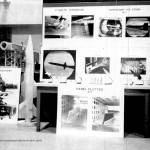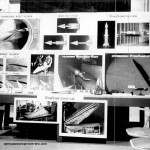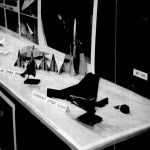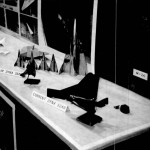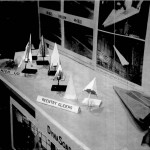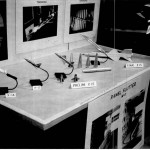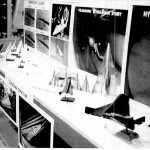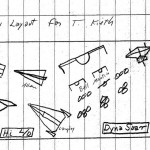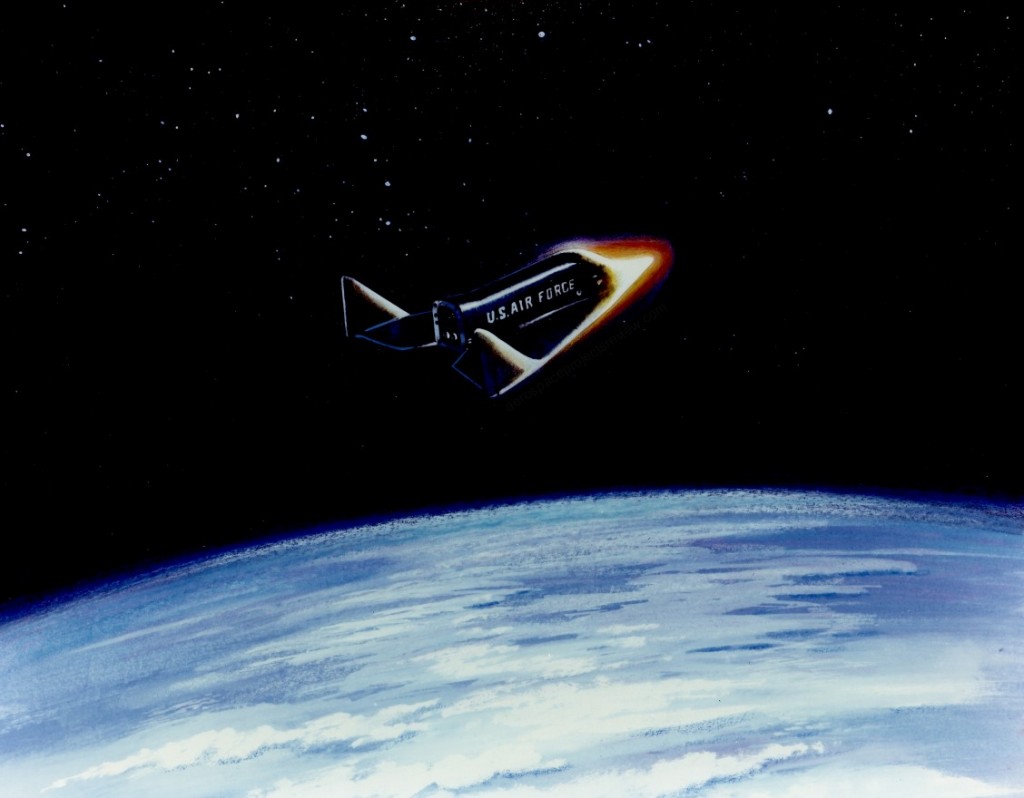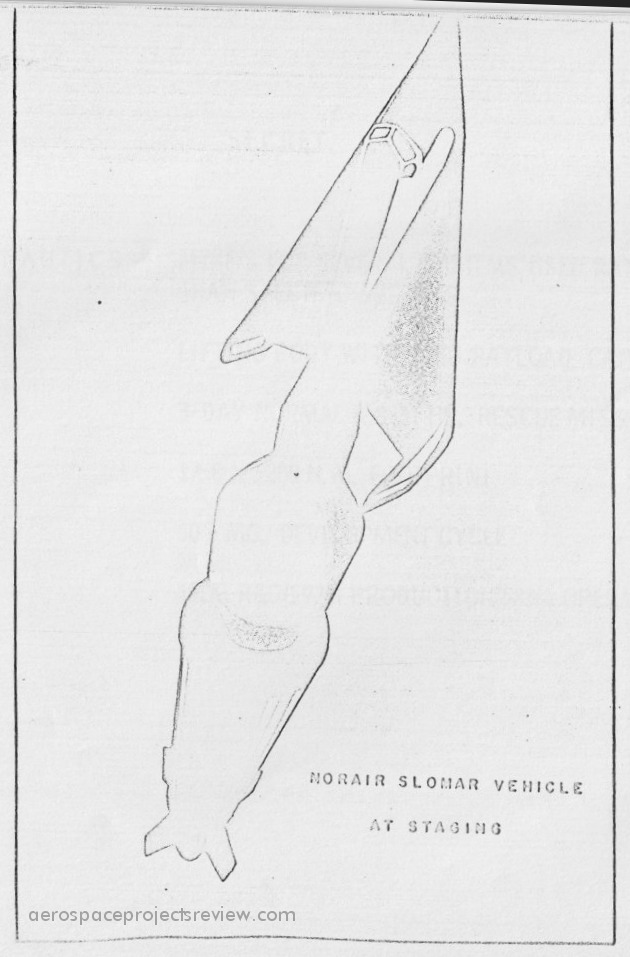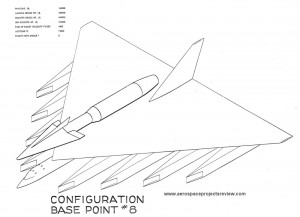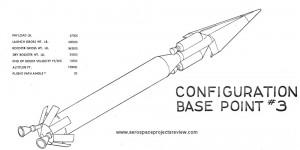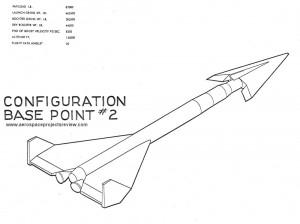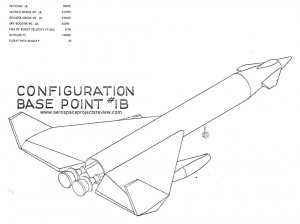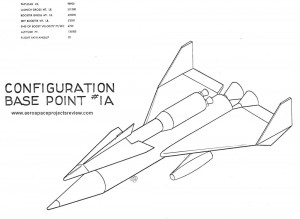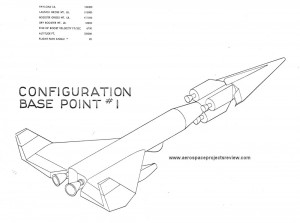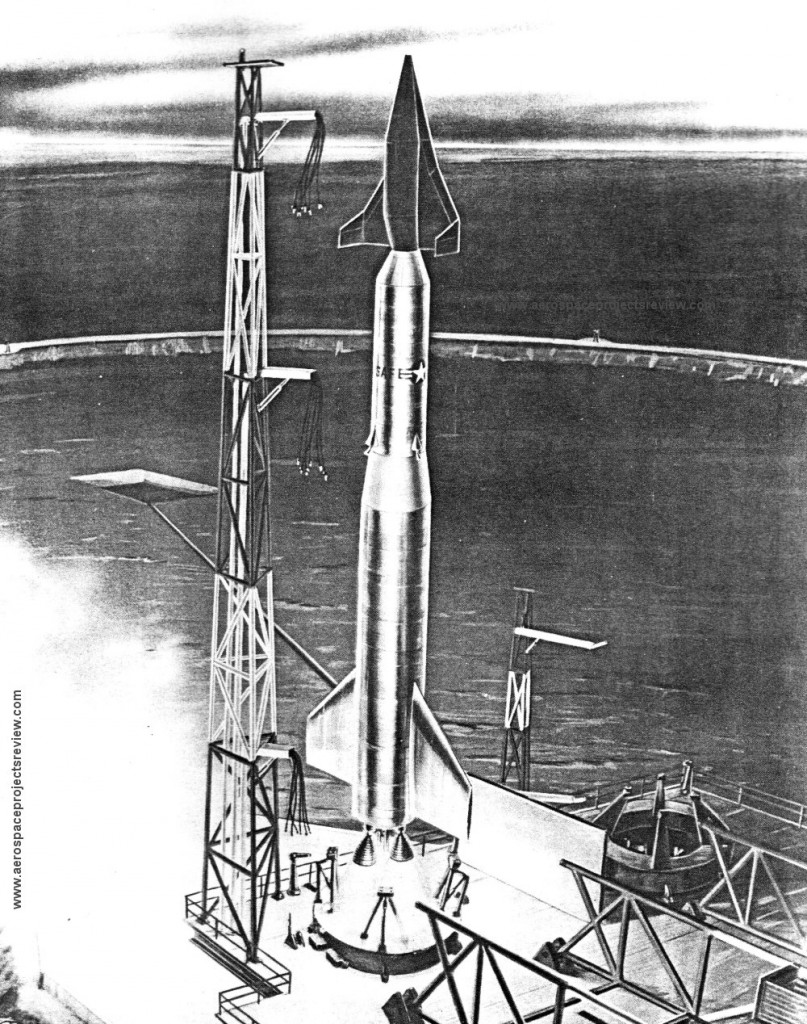From sometime around 1963, a few photos of wind tunnel models at NASA-Langley. Shown are a range of Dyna Soar models, from pre-Dyna Soar “HYWARDS” concepts to the initial Boeing 844 design to the final Boeing Model 2050E configuration.
The quality is terrible, but apart from photos of a display model, this is the only illustration have of Northrop’s design for SLOMAR (Space LOgistics Maintenance And Rescue), a USAF program circa 1961 to study the sort of spacecraft that would be needed for crew and cargo transport to the space stations that everyone knew the USAF would have in some abundance by the end of the decade. The Northrop design is virtually identical in configuration to the Boeing Dyna Soar, though apparently a bit bigger.
A 1959 Boeing concept for an airbreathing HTOL booster for Dyna Soar. Compared to the other pure-rocket VTO boosters, this would have been a monster… far bigger, far heavier, far, far more expensive. Which almost certainly explains why not only did such a booster not get serious study further down the line for Dyna Soar, it didn’t even rate detailed diagrams in the reports.
Staging would have been an interesting show.
NOTE: The isometric artwork for baseline concepts 4-7? Not available, sadly.
A reproduction of admittedly dismal quality of a Martin Co. painting of their December 1958 Dyna Soar configuration at launch. This configuration, the product of a team-up of Martin and Bell, competed against Boeing (and other companies) and lost; what must have been grating for the Martin-Bell folks was that the Boeing design that won looked nothing like the final Dyna Soar design… which actually looked a whole lot like this vehicle.
The Dyna Soar is here being shown launched by a modified Titan I ICBM. This booster would have fallen far short of orbiting the Dyna Soar; instead it would have simply tossed it on a long hypersonic suborbital trajectory. This would have been a purely experimental aircraft, the natural follow-on to the X-15.
